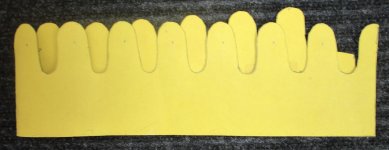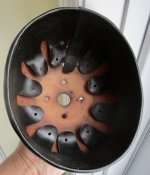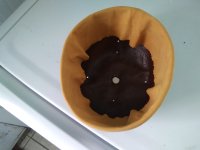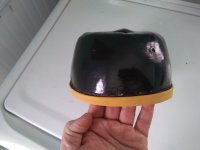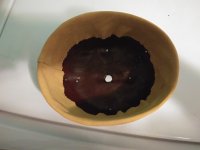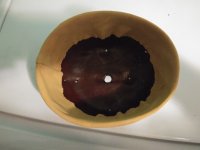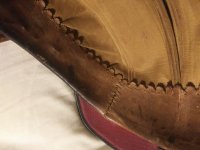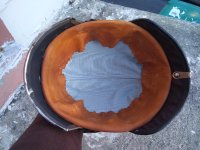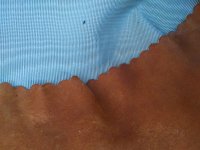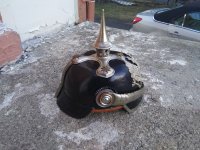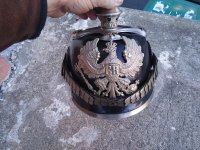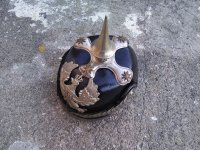Thickness of leather is measured in ounces and I don't know what the thickness of an officer liner would be. You would have to take an original piece to some store that sells leather craft supplies and get them to measure it. I did this with an OR's helmet and that liner was 2 ounce thickness. Regarding your photos above....your liner is too long at present and thus the folds. In order to get a tight fit to the shell, I wet about an inch up from the straight edge before I stitch. This allows you to pull the leather tight as you stitch around the rim. However, you have to be prepared to stitch the entire liner to the shell (complete) if you do this. You will notice how sharp and tight the fold is on my liner. This is because it was stitched in wet and pulled tight as I stitched. You can't let the wetted area/edge dry out. Once finished put the shell on a tight head form and allow to dry. Let this sit for a couple of days and as a result you will get a nice sharp fold over the rim of the shell.
OR/EM liners were sewn onto the shell before the M91 side posts were put on so consequently, if you are going to stitch in a new liner or new original liner, you should remove these posts. I have stitched in new repro liners without removing the M91's but you can't do this with the old original leather. Good luck with your stitching, I hope these words of mine provide some help.

